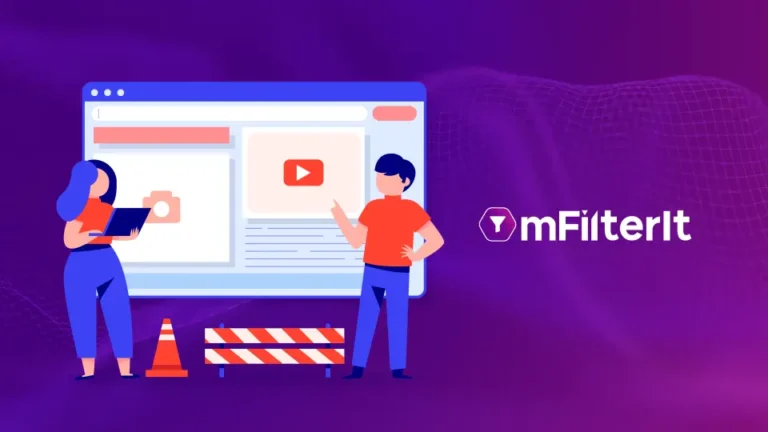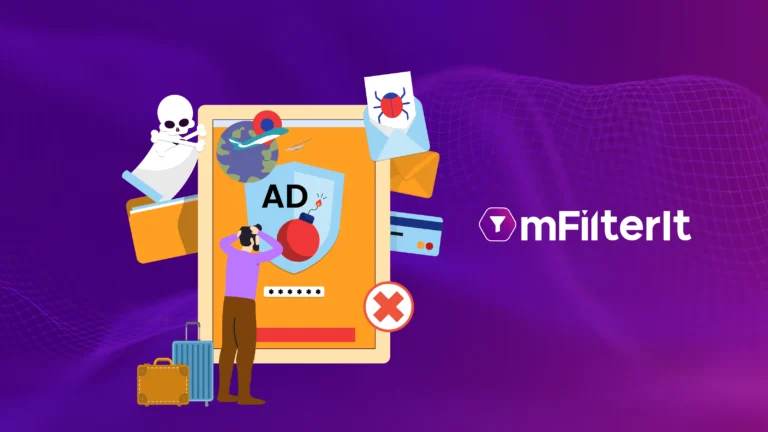You launch a referral program with the intention to acquire new users to your app. When analysing your campaign progress, you see that your referral champion is a single user who somehow ‘invited 200 people overnight’.
You feel confident to spend more on these campaigns.
On your dashboard there are 200 people, but upon deeper analysis you see that only a few retain as users. That’s a sign that something is not right. It’s not the usual invalid traffic, but a more advanced and difficult version of ad fraud. Referral and coupon fraud are advanced types of mobile ad fraud which impacts the action driven KPI’s and can skew your data. In this blog, you will discover –
In this blog, you will discover –
- What is referral and coupon ad fraud?
- How does it happen?
- Impact of referral and coupon fraud on campaigns?
- How can advertisers protect their referral campaigns?
- Real case of a Referral coupon fraud
What is Referral and Coupon Fraud?
Referral and coupon fraud are among the most common affiliate marketing fraud that can significantly drain a brand’s paid marketing efforts.
Referral Fraud
Referral fraud happens when people exploit referral programs to earn rewards without bringing in genuine new users.
What leads to referral fraud?
- Creating fake accounts to claim referral bonuses
- Using bots or emulators to trigger installs or sign-ups
- Sharing referral codes on unauthorized platforms to mass-farm rewards
Coupon Fraud
Coupon fraud occurs when fraudsters including dishonest affiliates use invalid codes, promo offers, or counterfeit coupon to claim false monetary benefits without enabling campaign to reach to the new audience.
What leads to coupon fraud?
- Using expired or unauthorized coupon codes
- Creating multiple accounts to repeatedly use new user offers
- Manipulating apps/websites to redeem the same coupon multiple times
- Circulating leaked internal or partner-only promo codes
How does Referral and Coupon Fraud happen?
In affiliate marketing, referral and coupon ad fraud can happen at large scale. Here’s how each of these tactics contributes to fraud –
First-Time User Fraud
This is the most common form of referral fraud. Referral codes are usually meant for new users only, but fraudsters reuse these codes by creating multiple fake accounts. They rely on bots, simulators, device farms, fake emails, and virtual phone numbers to look like new users each time.
Example: In ride apps like Ola or Uber, people often create fake accounts just to claim first-ride promo codes, which drains the advertiser’s budget and inflates fake new-user number.
Self-Referral Fraud
In this type of fraud, the same person acts as both the referrer and the referee. Instead of genuinely referring a new user, they use their own information in different combinations such as multiple email IDs or different phone numbers to claim both rewards. Sometimes, they even reuse the same number with minor variations just to game the system.
Fraudulent Coupon Codes
Fraudsters misuse promo or referral codes by circulating fake, unauthorized or expired coupon. Users who try to redeem these, end up disappointed when the brand cannot honor them, leading to mistrust and damaging the brand’s credibility. This type of fraud turns simple reward programs into a loophole for illegitimate incentives.
App Cloning (Parallel Space / Dual Apps)
App cloning or parallel space gives an advantage to the user to log into two different user accounts simultaneously by creating a separate parallel space on Android devices. This enables them to create multiple accounts, refer themselves, and repeatedly redeem referral rewards. Ride-hailing apps, gaming apps, and social apps often become the targets of this trick.
Gift Card & Return Fraud Losses
Fraudsters misuse gift cards, exploit refund loopholes, and combine them with referral rewards to extract illegitimate value leading to revenue loss and compromised program integrity.
Bots, Emulators & VPN/Proxy Abuse
Fraudsters rely on automated tools and device manipulation to fake new users. Using bots and emulators, they reinstall apps, regenerate device details, and pretend to be different users. VPNs and proxies hide their real IP addresses or fake their location, making detection difficult. Advanced bots can even use real user information to redeem referral benefits without being caught.
Impact of Referral and Coupon Fraud on Brand
The impact of such deceiving tactics falls on brand in the form of –
- Wasted Ad Budget: Fraudsters generate fake users, false installs, and invalid coupon redemptions, causing the advertiser’s referral budget to drain quickly.
- Lower ROI: Campaign performance looks inflated, but the actual return drops sharply because none of the fraudulent activity contributes to real growth.
- Damaged User Trust: Genuine users lose confidence when fraudulent coupon misuse prevents them from accessing the benefits they were promised.
- Poor Customer Experience: When rewards fail or referral codes don’t work, both new and existing users feel frustrated and disengaged.
- Brand Reputation Hit: Ongoing fraud creates the impression that the brand’s referral or reward system is unreliable, negatively affecting long-term loyalty.
How Advertisers Can Protect Their Referral and Coupon Campaigns
When tactics of fraudsters evolve at an alarming pace, protecting referral and coupon campaigns for brands become more important –
Start with Basic Manual Checks
Advertisers can begin by reviewing phone numbers, email IDs, and domains used in referral or coupon redemptions. This helps identify obvious patterns like repeated domains, suspicious email formats, or invalid phone numbers. While this offers quick surface-level detection, manual checks cannot catch sophisticated bot activity, device manipulation, or high-volume fraud operations.
Strengthen Protection with a Fraud Detection Solution
To truly safeguard referral and coupon campaigns, advertisers should work with a dedicated ad fraud detection provider. Advanced platforms look beyond simple IP repetition and analyze the entire device environment. This includes detecting bots, emulators, disposable emails, virtual phone numbers, app cloning, and suspicious domains, ensuring clean and legitimate referral traffic.
Use Deep Validation & Real-Time Blocking
Integrating advanced solutions like an SDK for apps and DSS for websites allows advertisers to validate traffic at every touchpoint. Key checks such as device IDs, email authenticity, domain hygiene, digital reputation, phone number legitimacy, cloning flags, and IP behavior, help identify fraud instantly. Advertisers receive real-time fraud scores and can automatically block fraudulent device IDs before they drain budgets or degrade user experience.
How mFilterIt Safeguard Against Sophisticated Referral and Coupon Fraud
mFilterit’s ad fraud protection tool Valid8 enables advertisers and brands to have a keen look on whether the traffic is coming from a legitimate source or not. Here’s how the right solution tackles referral and coupon fraud –
Validates Every User at a Device-Environment Level
Valid8 goes beyond basic IP checks and analyzes the complete device environment. It detects bots, emulators, cloned apps, VPN/proxy manipulation, virtual phone numbers, fake emails, and repeated device IDs, ensuring that only real, high-quality users enter your referral or coupon program.
Deep Traffic Hygiene Checks to Stop Fraud at the Source
With advanced validation layers such as device ID intelligence, domain and email authenticity, digital reputation analysis, fake/disposable phone number detection, and cloning indicators, Valid8 identifies fraud instantly. This prevents misuse of first-time user offers, coupon code abuse, return/gift card fraud, and self-referral attempts before they inflate your metrics.
Real-Time Fraud Scoring & Instant Blocking
Valid8 provides real-time fraud scores for every user and flags suspicious devices the moment they interact with your campaign. Fraudulent device IDs, emails, and mobile numbers are automatically blocked, protecting your ad spends, improving ROI, and ensuring reward benefits reach genuine users only.
Actionable Insights Backed by Real Case Analysis
Valid8 doesn’t just detect fraud, it uncovers patterns by providing deep intelligence that helps advertisers optimize campaigns, eliminate revenue leakage, and strengthen program integrity.
How We Exposed Referral Fraud for a Global Petroleum Leader
A leading global petroleum brand launched a large-scale referral campaign to boost new user acquisition across multiple channels. However, the surge in activity also brought an unexpected spike in referral fraud, prompting the company to onboard mFilterIt’s advanced ad traffic validation solution.
After implementing mFilterIt’s multi-layered fraud detection, the brand achieved significant performance improvements, including:
- 68% verified clean installs, with 32% identified as fraudulent
- 21% of clean installs flagged as referral coupon abuse, enabling deeper optimization of the referral program
Conclusion
Referral programs are powerful growth engines for acquiring new users and rewarding existing ones. But when fraud creeps in—through fake accounts, repeated coupon redemptions, or bot-driven referrals—brands lose more than just money. They risk user trust, campaign integrity, and long-term reputation.
While basic manual checks can help uncover surface-level issues, they’re not enough to stop sophisticated bots, emulators, and device-level manipulation. That’s where a specialized solution becomes essential. mFilterIt’s Ad Traffic Validation Suite, Valid8, ensures your referral and coupon campaigns attract only genuine, high-quality users.
Want to safeguard your growth? Schedule a discovery call now
FAQs
What are the types of coupon fraud?
Common types include using expired or unauthorized codes, redeeming the same coupon multiple times, creating multiple fake accounts to claim new user offers, circulating leaked promo codes, and using counterfeit or manipulated coupons.
How to combat coupon fraud?
Use device-level fraud detection, validate emails and phone numbers, block VPN/proxy traffic, monitor coupon redemption patterns, and integrate real-time fraud scoring tools to instantly flag suspicious activity.
How do fraudsters create fake referrals?
They create multiple fake accounts using bots, emulators, cloned apps, disposable emails, and virtual phone numbers. They also self-refer by using their own details in different combinations to claim both referrer and referee rewards.




